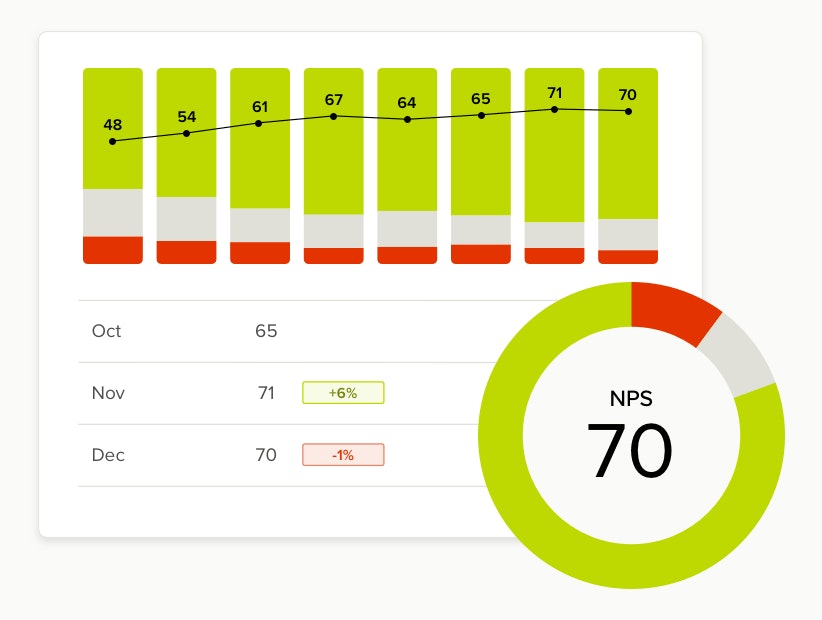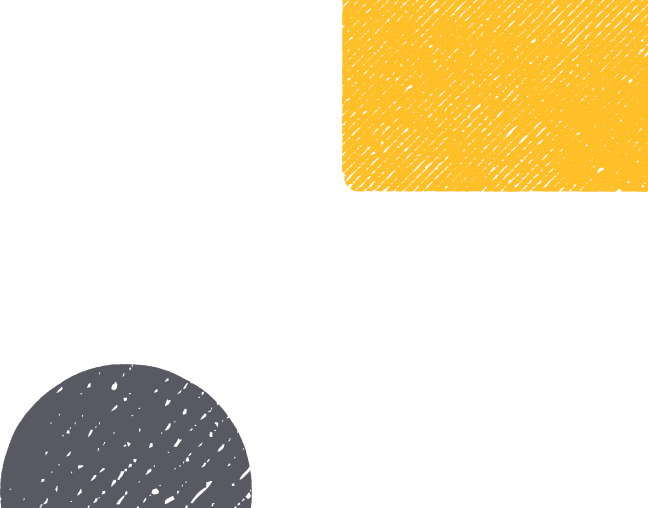How to use NPS surveys to drive customer referrals
By Mitali Shukla●5 min. read●Nov 21, 2025

Incentivizing happy customers to refer their friends is an effective way to acquire new customers at low cost. To make the process efficient, you have to identify the right customers to target for referrals, and then offer them the right incentives.
Customers broadly fall into two categories: those who are satisfied with your brand and those who aren’t. One of the last things you want to do is unknowingly ask an unhappy customer to refer a friend.
Net Promoter Score (NPS) survey feedback can help uncover who’s who so you can follow up accordingly. Send your happiest customers a referral request, and route unsatisfied customers to support to turn the experience around.
Find out how exactly you can go about using Net Promoter Score (NPS) surveys to identify your happiest customers for your referral program.
What is a Net Promoter Score (NPS)?
Net Promoter Score (NPS®), developed by Bain & Company, is a measure of customer loyalty collected through firsthand feedback. An NPS survey asks customers how likely they are to recommend the company to someone they know on a scale of zero to 10.
Zero means not at all likely, whereas 10 is extremely likely. Specific scores also represent specific customer profiles:
0 to 6 are called detractors
7 to 8 scorers are called passives
9 to 10 are promoters of your brand
The final score comes from subtracting the percentage of detractors from the percentage of promoters, resulting in a whole number that ranges from -100 to 100.
If you have a negative score, that means your detractors outweigh your promoters. Final scores of 20 and up are considered favorable, but the higher the score, the better.

NPS is instrumental in gauging which customers to approach for a referral and to increase customer lifetime value (CLV). It’s also a popular customer experience (CX) metric given its simplicity, efficacy, and correlation with revenue growth.
5 best practices for sending NPS surveys
Experience management (XM) platforms make it easier to run NPS surveys, but there are still a few tips and tricks to follow for high volumes of feedback.
1. Customize the NPS survey to fit your branding
Upload your logo and customize the color scheme of your survey to fit your brand to make sure customers recognize your company. Styling the survey interface to match your brand helps keep your digital experience unified across all your customer touchpoints.
2. Keep your survey short
The briefer your survey is, the easier it will be for customers to complete, which can increase survey response rates. Surveys that exceed 12 questions are often too long, which can cause customers to click away. Be sure to time your survey and make sure that it takes no longer than five minutes to complete.
The traditional NPS survey asks two questions: the initial rating question and a follow-up question that asks customers to explain their rating.
3. Choose the appropriate surveying channel
Selecting the right distribution channels for your surveys can encourage responses and paint a more holistic picture of customer sentiment. Choose from the following survey channels depending on your demographic.
Email surveys make it simple for customers to share feedback. Your customers can reply directly in the email without being redirected to an external page. Customize survey cadence based on triggers like a transaction or conversation with customer support.
Web surveys are easy to deploy as they can live on any page of your site. Gather feedback at checkout, after purchase completion, or even as the customer browses your website.
Link surveys. For flexibility, link survey URLs can be placed anywhere customers interact with your brand, from social media to QR codes on receipts. You can even ask customers for feedback in an email signature or on printed marketing materials.
Kiosk surveys. Collect in-person feedback in seconds with a touch screen interface. Place your kiosk on counters or mount near store entrances for easy customer access. Customize survey questions to be most relevant to the insights you’re looking to surface.
Whether you choose email, web, link or kiosk surveys, choosing the right survey channel can improve response rates and get you a smooth flow of actionable feedback.
4. Personalize the survey to each customer
If your customer feels like more than a number, they’ll be more likely to share feedback. Personalize their survey with basic details:
Use their name in the email
Reference their most recent purchase or interaction
Translate the language of your survey for international customers
Segment your audience by geography or interaction channel
End with a customized thank-you page
5. Send your survey at the right time
The best time to send an NPS survey is after a customer interacts with your brand in a meaningful way:
After they receive their order
Make a return
Speak with a customer support representative
Depending on your business model, the timing of your surveys may vary given transaction frequency and customer demographics.
Follow these best practices to get the NPS feedback you need in order to improve customer experience across the board. With the help of NPS surveys, you can start identifying where your customers’ biggest pain points are and make a plan to resolve them.
Using NPS to solicit referrals
Your brand promoters (customers who rated you a 9 or 10) are perfect candidates for a referral program since you know they had a positive experience with your brand. In fact, satisfied customers are 4x more likely to recommend your brand according to Qualtrics.
There are a few ways you can automate referral requests from your promoters:
Ask them to refer a friend as part of the survey flow. At the end of your survey, encourage promoters to recommend your brand and increase referrals.
Integrate NPS feedback into your email nurture programs. This way, all of your promoters get automated follow-up messaging about your referral program.
Ask them to leave a review on a third-party review site. In addition to 1:1 referrals, solicit review requests to spread the word on popular rating sites.
Now for the customers who aren’t likely to promote your product or service: your detractors (folks who rated you a 0 to 6). The most important thing to do is follow up with them to understand where your company can grow and improve, specifically by immediately routing them to your customer support team for help.
Close the loop by collecting more information about their experience. If you can address their poor experience quickly, you could even turn a detractor into a promoter. Following up with detractors gives them the opportunity to share the shortcomings of your company’s customer experience.
With that knowledge, your business can be proactive in solving customer pain points and improving your customer experience overall. Collecting customer feedback closes the gap between customer expectations and their experience to uncover what can be improved.
Key takeaways
Customer experience is the hallmark of a successful business: if your customers are happy, they’ll keep coming back.
If you add a referral program to the mix, you’ll create a system that further engages your existing customers, while rewarding them for spreading the word. It’s a win for everyone.
Once you implement a system to identify your top customers, the next step is choosing the right incentive.


